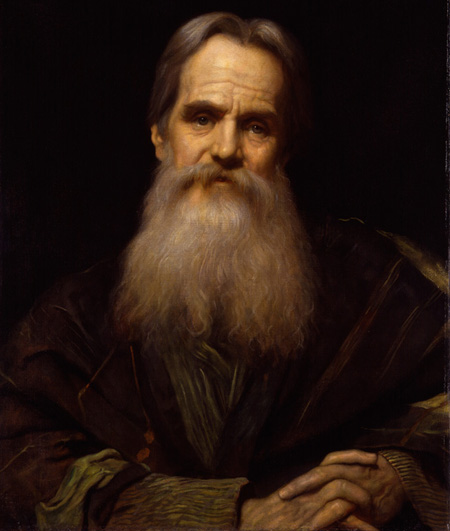
My book, Moustaches, Whiskers & Beards, a history of facial hair in portraiture, came into being following a walk around the first floor of the National Portrait Gallery. I was with a colleague thinking up ideas for gallery talks. When we stopped in front of the enormously noxious beard sported by William Holman Hunt, my colleague noticed my shudder and asked why. I admitted that all those huge Victorian beards made me feel sick, especially when coupled with a knowledge of 19th century hygiene practices (or lack thereof). He joked that I needed to “face my phobia” and give a talk on Victorian beards.
A few weeks later he emailed to say everyone in the office loved the idea and please could I do a talk on Victorian facial hair. The talk was so popular, I was asked for a Movember tour of moustaches in the gallery. From that, my book proposal was born. I had discovered that the rise and fall (or the curl and shave?) of facial hair in Britain has a fascinating story, tied in with many different aspects of social history.
Did you know that three of the most heavily bearded eras in British history have coincided with the reigns of female monarchs? During the time of Queen Elizabeth I and Queen Victoria men remained bearded for decades, with beards leaping out of fashion as soon as a king took power. Queen Elizabeth II has witnessed two beard explosions: in the 1960s-1970s and the 2010s.
It seems that when women are in power, men feel the need to grow beards – and the bigger and bushier, the better. When Maggie Thatcher came to power, the 1970s beard was waning, so under the only female P.M. in British history (so far), fashionable men were seldom seen without ‘designer stubble’. It seems we can attribute the 2010s explosion to ‘new feminism’ – in which case I nod a dubious recognition to Caitlin Moran et al for ushering in so many hipster beards. […]
First published on 23rd November 2015. Read full article online.